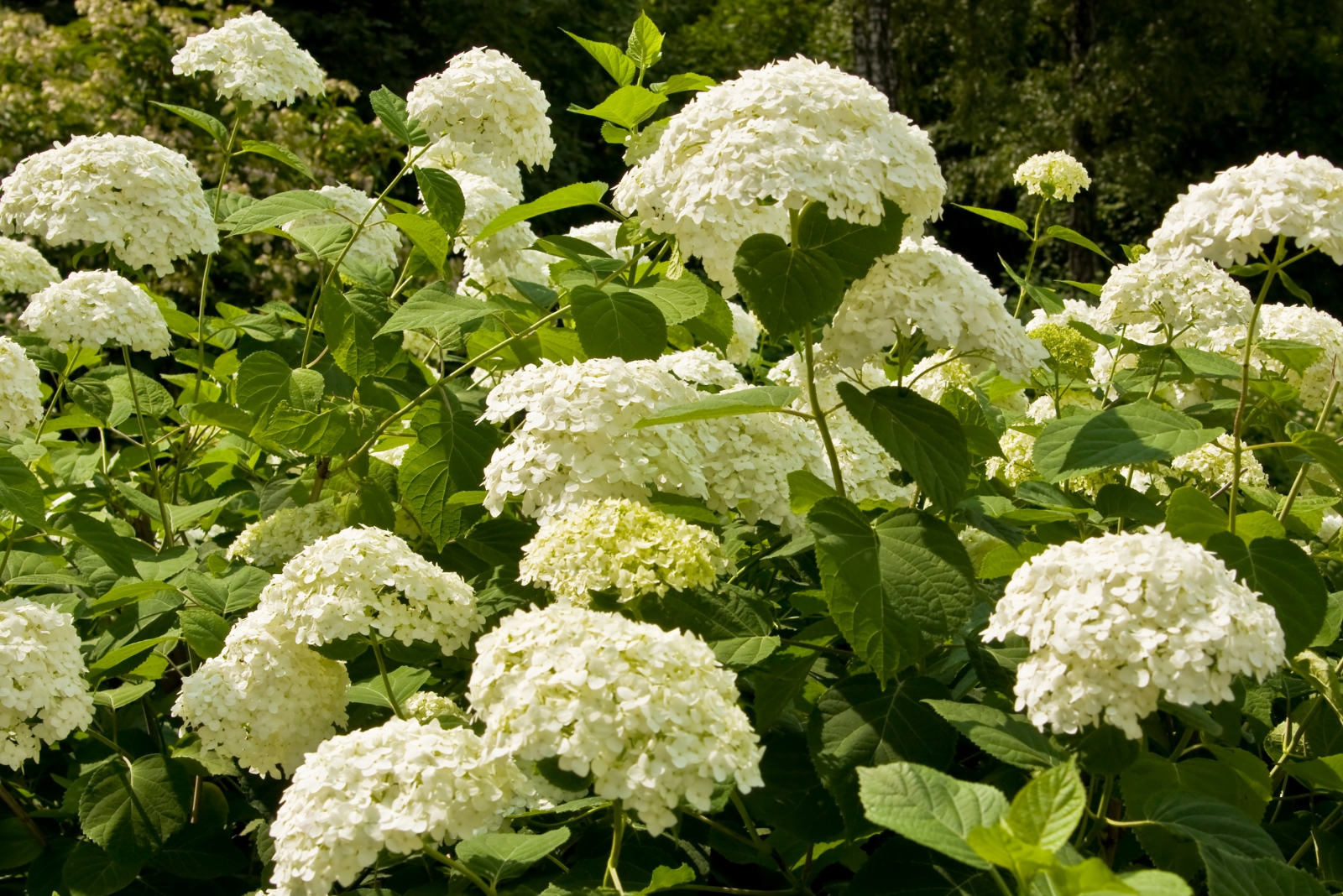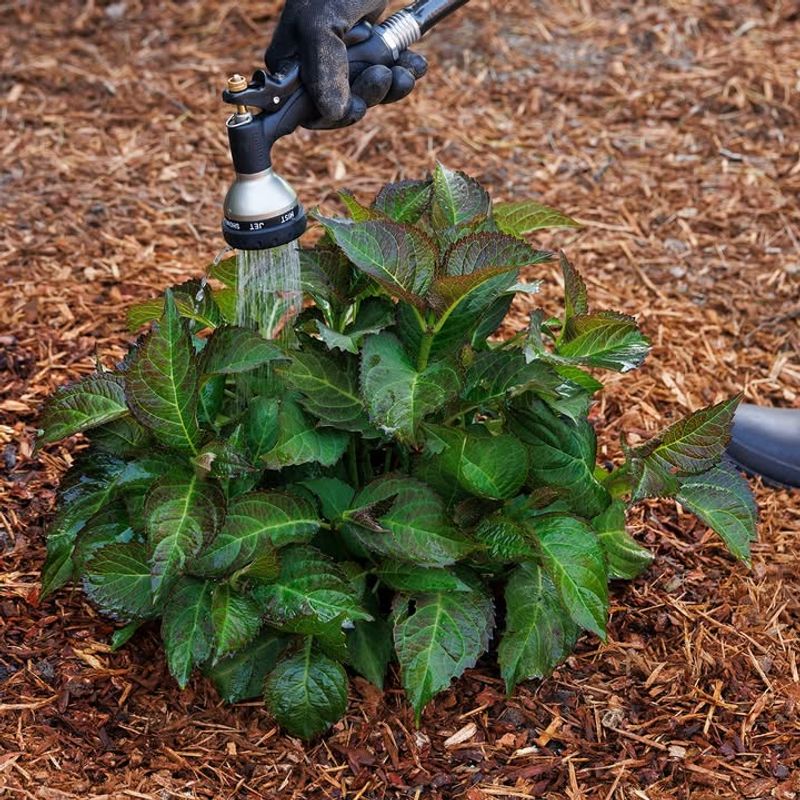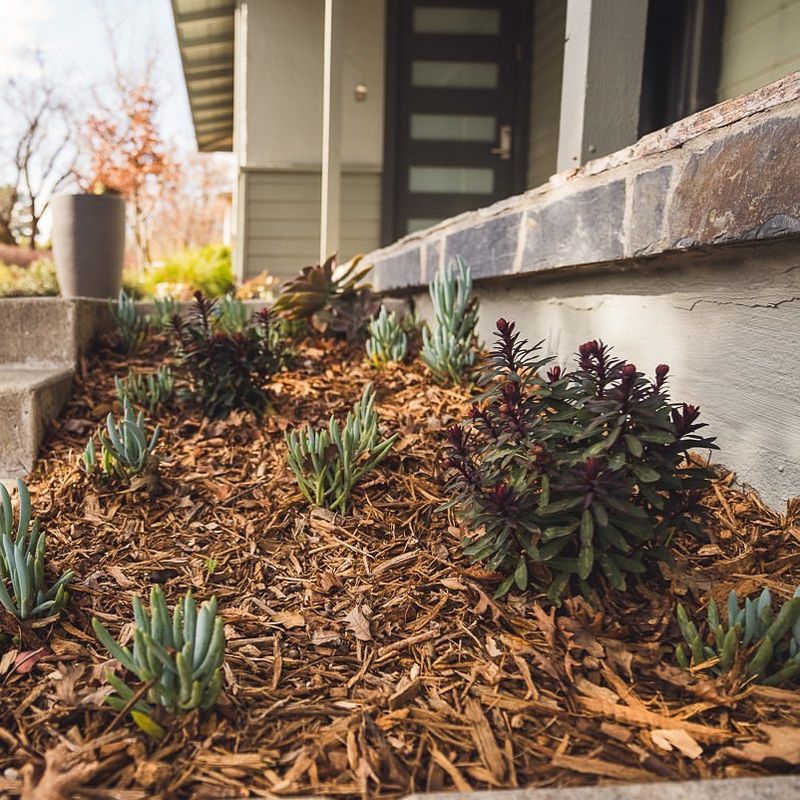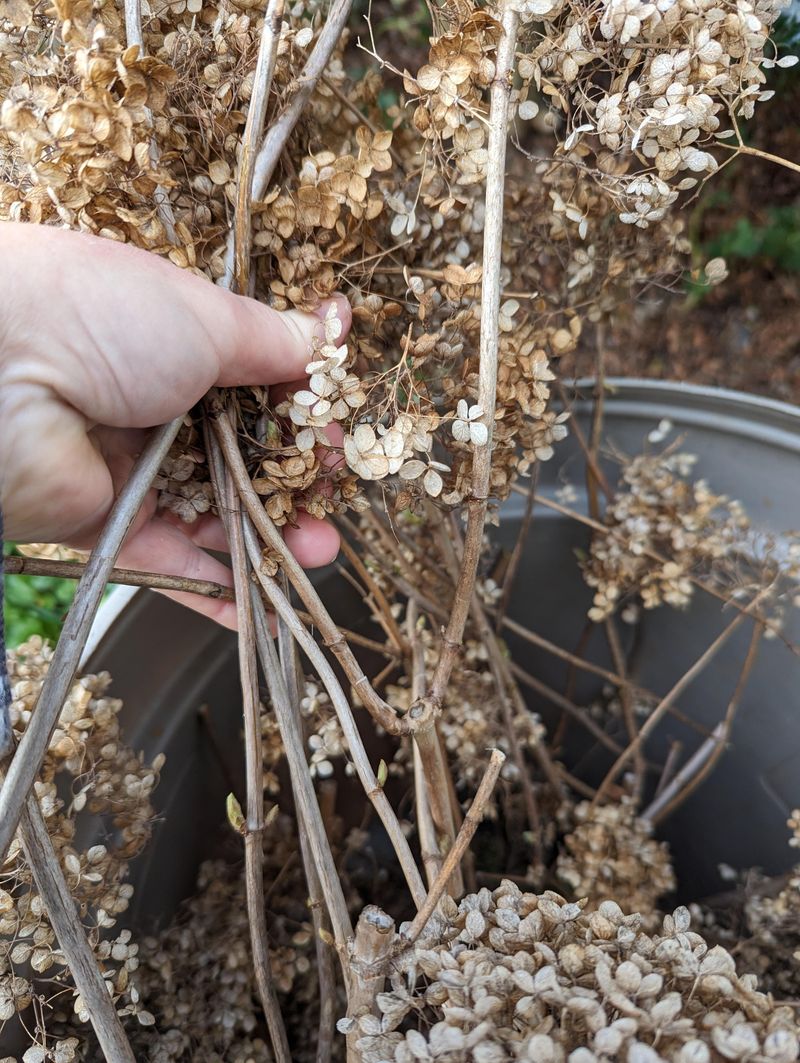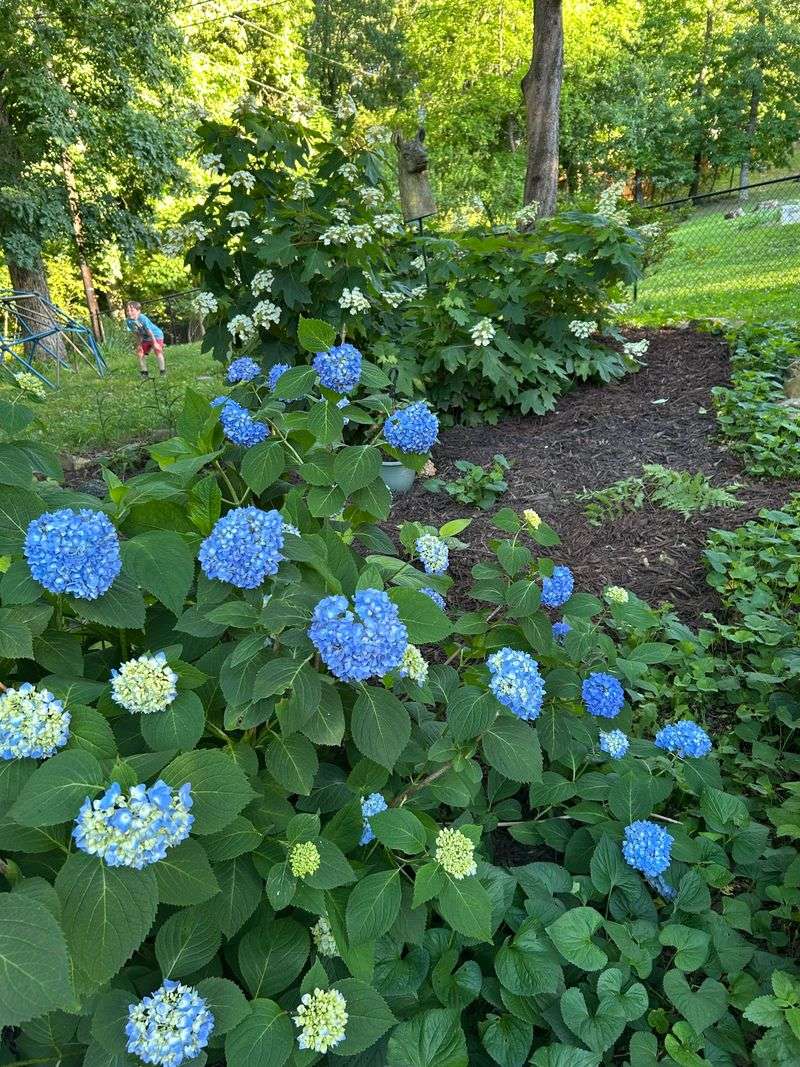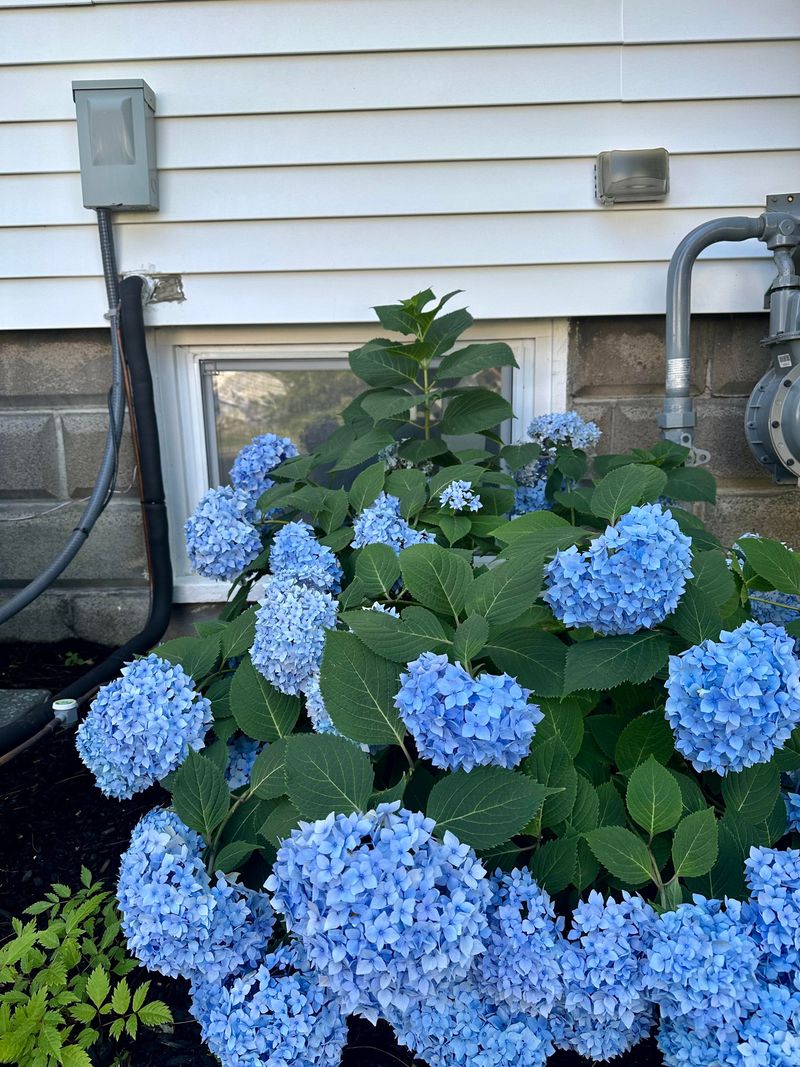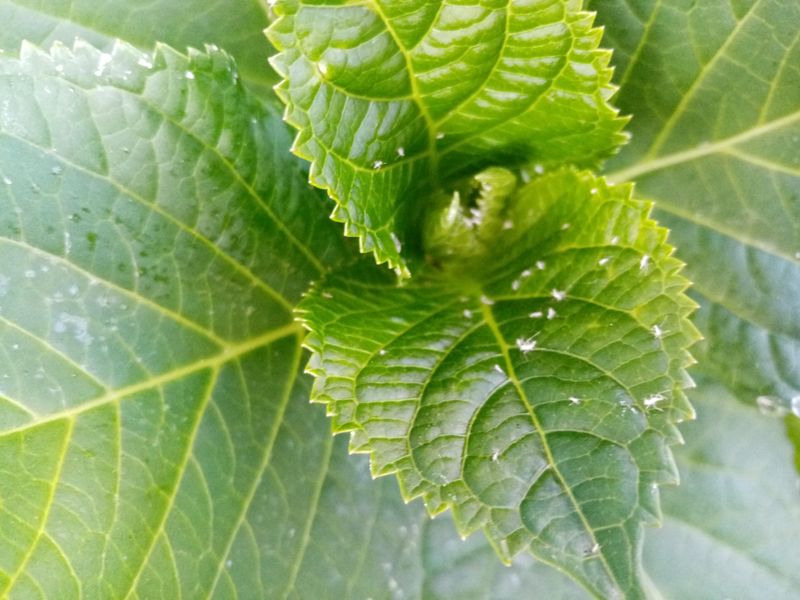Hydrangeas in New Mexico need a little extra attention right now if you want them to bloom beautifully later. I spent last fall catching up on these tasks, and it made such a difference come spring.
From pruning to checking soil moisture, a few quick actions can set them up for success. Give them some care this week, and they’ll reward you with stunning, full blooms when the season turns warm again.
1. Deep Water Your Hydrangeas Thoroughly
New Mexico’s arid climate means your hydrangeas are probably thirstier than you think. Water deeply at the base of each plant, soaking the soil at least six inches down.
Shallow watering encourages weak roots that can’t handle heat stress. Aim for slow, steady watering early in the morning to reduce evaporation.
Your hydrangeas will reward you with fuller, healthier leaves and more vibrant blooms when they get enough moisture throughout the week.
2. Apply a Thick Layer of Mulch
Mulch acts like a protective blanket for your hydrangea roots, keeping them cool and moist even during scorching New Mexico afternoons. Spread a three to four-inch layer of organic mulch around each plant.
Wood chips, shredded bark, or compost work wonderfully. Keep mulch a few inches away from the stem to prevent rot.
Mulching now saves you watering time later and helps your soil retain precious moisture in our dry climate.
3. Check and Adjust Soil pH Levels
Did you know that soil pH controls your hydrangea’s bloom color? New Mexico soil tends to be alkaline, which pushes blooms toward pink shades.
Test your soil this week using an inexpensive kit from any garden center. If you want blue flowers, add sulfur or aluminum sulfate to lower pH.
For pinker blooms, add lime to raise it. Adjusting pH now gives your plants time to absorb nutrients before flowering season peaks.
4. Prune Dead or Damaged Stems Carefully
Walk around your hydrangeas in New Mexico and look for brown, brittle, or frost-damaged stems from winter. Removing these now redirects energy toward healthy growth and beautiful blooms.
Use clean, sharp pruning shears and cut just above a healthy bud or node. Avoid over-pruning, especially on varieties that bloom on old wood.
A little trimming goes a long way in keeping your plants looking neat and encouraging vigorous new shoots.
5. Feed Plants with Balanced Fertilizer
Your hydrangeas are hungry after a long winter, and New Mexico’s nutrient-poor soil doesn’t always provide what they need. Apply a balanced, slow-release fertilizer around the base this week.
Look for formulas with equal parts nitrogen, phosphorus, and potassium. Water thoroughly after feeding to help nutrients soak into the root zone.
Proper fertilization boosts leaf growth and encourages abundant, show-stopping blooms that will make your neighbors jealous all season long.
6. Provide Afternoon Shade Protection
Intense afternoon sun in New Mexico can scorch hydrangea leaves and fade delicate blooms faster than you’d like. If your plants are in full sun, consider adding temporary shade cloth this week.
A simple frame with 30 to 50 percent shade fabric works wonders. Alternatively, plant taller perennials or shrubs nearby to create natural shade.
Protecting your hydrangeas from harsh rays keeps foliage green and flowers vibrant throughout the hottest months ahead.
7. Inspect for Pests and Disease
Aphids, spider mites, and powdery mildew love attacking stressed hydrangeas, especially in dry New Mexico conditions. Check the undersides of leaves and stems for tiny bugs or white powdery spots.
Catch problems early by inspecting plants weekly. Spray affected areas with insecticidal soap or neem oil as soon as you spot trouble.
Healthy plants resist pests better, so maintaining good watering and feeding habits is your first line of defense against garden invaders.
8. Improve Drainage Around Plant Base
Even though New Mexico is dry, overwatering or poor drainage can still cause root rot in hydrangeas. Check that water doesn’t pool around the base after you irrigate.
If drainage seems slow, work compost or perlite into the soil to improve flow. Raised beds also help in areas with heavy clay.
Good drainage keeps roots healthy and prevents fungal diseases that can quickly kill your beautiful hydrangeas before they reach their full blooming potential.

